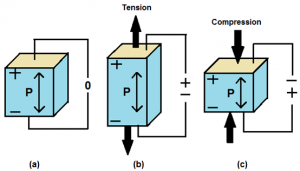Sep 27 2016
Piezoelectric Roads
 By now you have probably heard of the idea of making solar roads, essentially paving roads with hardened photovoltaic plates that will not only power the roads themselves (heat and light them) but provide clean energy. The idea has a certain appeal, but seems impractical (at least with current technology) and certainly should not be a priority before picking much lower hanging fruit, like putting solar panels on rooftops.
By now you have probably heard of the idea of making solar roads, essentially paving roads with hardened photovoltaic plates that will not only power the roads themselves (heat and light them) but provide clean energy. The idea has a certain appeal, but seems impractical (at least with current technology) and certainly should not be a priority before picking much lower hanging fruit, like putting solar panels on rooftops.
While I might be critical of the idea itself (critical in a constructive way), I applaud the act of coming up with new and interesting ideas. Most new ideas are going to fail, especially if they are truly innovative. In order to find the great ideas that are going to work we are going to have to climb a mountain of failed ideas. It’s just part of the process. For this reason I always have a soft spot for people who think up crazy new schemes (as long as they are not based on magic or pseudoscience), and will praise the process even when I shoot down the idea itself.
The Piezoelectric Effect
With that in mind, recently the The California Energy Commission granted $2 million to study the feasibility of putting piezoelectric crystals in roads as a way to generate clean energy. This probably won’t work, but that’s OK. The study is probably worthwhile anyway.
The piezoelectric effect is a property of certain crystals in which mechanical strain generates an electrical current. Specifically, pressing or deforming the crystal will create a voltage across its two sides. If you connect two sides to a circuit, it will generate current. You can also reverse the effect – apply electricity to the crystal and it will deform or vibrate.
Vinyl record players, quartz watches, and microphones all use the piezoelectric effect to function. That is also how braces work – the mechanical stress caused by the braces on your jaw cause the bone to reform through the piezoelectric effect.
One idea to help make our civilization more efficient, to generate more energy through clean and renewable sources, and also to power devices in odd places (like inside the body) is to use the piezoelectric effect to capture some of the mechanical energy in the world that would otherwise go to waste.
A lot of mechanical energy is dissipated through sound, heat, and deformation of substances. One thing to keep in mind, for example, is that if you hear a device working or hear any process, what you are hearing is sound energy radiating away. By definition, if you hear it, it is losing energy.
The idea is to capture some of the lost energy through piezoelectricity. For example, you could embed piezoelectric crystals in the sidewalk so that they will generate electricity from people walking on them. Rain falling on them, or on roofs, could also generate power.
How much power? It depends – on the crystal and on the mechanical force. I could not find a simple answer to the question of efficiency: how much mechanical energy can be converted into electrical power? There are many variables. This paper concludes that in an optimal system the maximum efficiency is 44%. This is a theoretical maximum, with perfect resonance and coupling and other variables. In the real world (what they call conservative parameters) we are probably looking at 3-5% efficiency, maybe lower.
Piezoelectric Roads
We spend a lot of energy getting around, including driving on roads. The $2 million grant will study the feasibility of paving California roads with embedded piezoelectric crystals and harvesting some of the energy of cars driving over those roads. The study will need to answer a lot of important questions:
How much will it cost to add the crystals to the roads? How long will they last? Will they last until the next time that road has to be repaved? How much electricity will they generate? What will be the total cost of that electricity, and how will it compare to other sources of energy?
If I had to bet, I would guess that the efficiency is going to be too low to make the whole endeavor worthwhile. But we’ll see. That’s the point of the experiment.
There has already been one similar project in Israel, which has apparently failed and closed up, but that does not have to be the final word. No one experiment is definitive, and a little replication is reasonable.
While I give this a low chance of working, I think $2 million is a small amount to invest in a potential new source of electricity. We will learn something useful from this, even if the project itself does not pan out.
This is not pseudoscience, perpetual motion, or magic. This is a real physical effect, and this will generate electricity, it is probably just not cost effective.
In fact, I doubt that we will ever harvest significant amounts of energy through the piezoelectric effect (at least not anytime soon). The efficiency of real-world systems is likely to be too low. It may become feasible if we could manufacture, for example, piezoelectric pavement for about the same cost as regular pavement, but again that’s not going to happen anytime soon.
We would essentially need a material science breakthrough that is a game-changer. Short of that, I think piezoelectric devices will be limited to small electronics.






